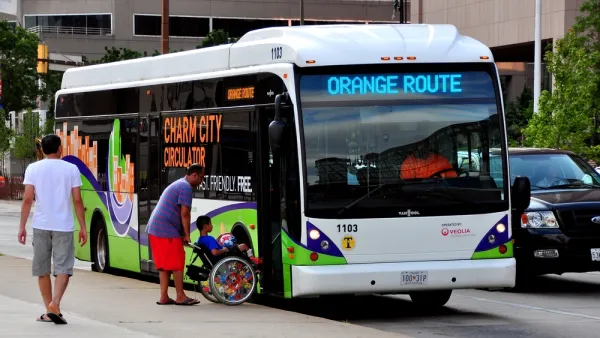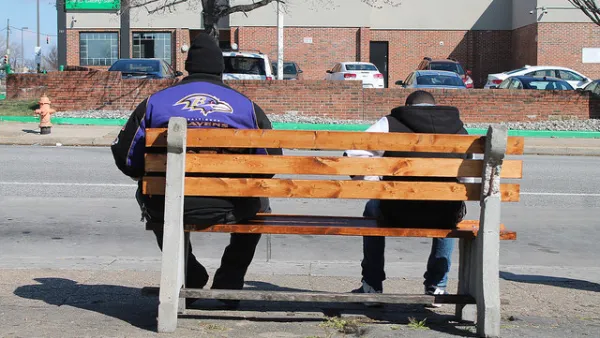A local bus and transit advocate pushes for more improvements to the Maryland Transit Administration's bus system in the city of Baltimore.

Danielle Sweeney checks in with the outcomes of BaltimoreLink, the first substantial redesign of Baltimore's bus system in 50 years, as implemented in June 2017.
According to Sweeney, the redesigned bus system promised "a high-frequency grid, dedicated bus lanes, and transit signal priority corridors that would dramatically improve service." Also, [t]he revamped system was supposed to give more Baltimoreans access to jobs and better connect residents of this high-poverty city to opportunities." Baltimore Mayor Catherine Pugh also "promised that BaltimoreLink would play a key role in the city’s future economic growth."
Initial findings, reported at the end of 2017 and again a year after the system opened, didn't exactly exude positive outcomes. Sweeney's current evaluation continues that theme:
Just before the bus reboot launched in June 2017, I started a Facebook group where riders could document their experiences with the new system. Before I archived it, after 15 months of comments, my group, “Where’s the Bus, Baltimore?” had more than 500 members, including MTA operators, management, and elected officials.
Overall, reviews of the new reboot have been less-than-stellar. Service quality has been all over the road, ridership is flat, and on-time improvements mixed. If you visit Charm City today, you’re likely to experience poorly enforced dedicated bus lanes, buses blamed for the city’s traffic problems, and riders complaining about no-show buses. Many of the dedicated lanes themselves are so faded they are almost invisible, and the MTA and Baltimore’s City’s Department of Transportation have yet to hammer out an agreement for maintaining them. So far, the so-called “transformative” bus system itself has few enthusiasts.
Sweeney provides additional details on the changes made by the BaltimoreLink redesign, a lot more data on whether the program achieved its stated goals, and opinions from local and national transit advocates on the current state of the system and how it could be improved.
FULL STORY: Hard Lessons From Baltimore’s Bus Redesign

National Parks Layoffs Will Cause Communities to Lose Billions
Thousands of essential park workers were laid off this week, just before the busy spring break season.

Retro-silient?: America’s First “Eco-burb,” The Woodlands Turns 50
A master-planned community north of Houston offers lessons on green infrastructure and resilient design, but falls short of its founder’s lofty affordability and walkability goals.

Delivering for America Plan Will Downgrade Mail Service in at Least 49.5 Percent of Zip Codes
Republican and Democrat lawmakers criticize the plan for its disproportionate negative impact on rural communities.

Test News Post 1
This is a summary

Test News Headline 46
Test for the image on the front page.

Balancing Bombs and Butterflies: How the National Guard Protects a Rare Species
The National Guard at Fort Indiantown Gap uses GIS technology and land management strategies to balance military training with conservation efforts, ensuring the survival of the rare eastern regal fritillary butterfly.
Urban Design for Planners 1: Software Tools
This six-course series explores essential urban design concepts using open source software and equips planners with the tools they need to participate fully in the urban design process.
Planning for Universal Design
Learn the tools for implementing Universal Design in planning regulations.
EMC Planning Group, Inc.
Planetizen
Planetizen
Mpact (formerly Rail~Volution)
Great Falls Development Authority, Inc.
HUDs Office of Policy Development and Research
NYU Wagner Graduate School of Public Service




























